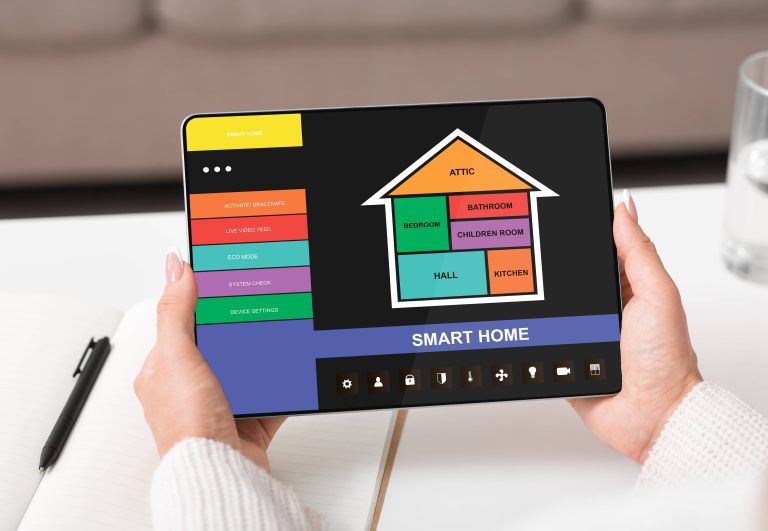
In an era where environmental concerns are at the forefront of global discourse, the conversation around energy efficiency and sustainability has never been more critical. At the heart of this discussion is the concept of the ‘smart home’—an interconnected ecosystem of devices and technologies designed to create a more efficient living environment. But how close are we to harnessing the full potential of smart homes for achieving complete sustainability? This blog will explore the advancements, challenges, and future prospects for smart homes in the pursuit of complete sustainability.
Understanding Smart Homes: The Basics
A smart home is more than just a gimmick-laden space. It’s an innovative environment where appliances, lighting, heating, and security systems communicate with each other and can be controlled remotely. Central to this is the Internet of Things (IoT), which allows for the connection and data exchange between everyday objects and systems over the internet.
The capability of these systems to manage resources more judiciously has immense implications for sustainability. In ideal scenarios, smart homes can significantly reduce energy consumption, optimize water usage, and minimize waste production.
Energy Efficiency: The Cornerstone of Sustainable Smart Homes
Energy management is perhaps where smart homes show the most promise. Smart thermostats, like those from Nest or Ecobee, learn from users’ habits and adjust heating and cooling settings to optimize energy usage. These devices can reduce heating and cooling bills by up to 15%, according to various studies.
Moreover, smart lighting systems, such as those offered by Philips Hue or LIFX, enable users to control lighting based on occupancy and natural light availability, further conserving energy. Integrating occupancy sensors ensures that lights and other systems are only active when necessary, thereby reducing waste.
Another significant advancement is the integration of renewable energy sources. Smart homes equipped with solar panels and battery storage systems, such as Tesla’s Powerwall, can store and manage self-generated energy. The ability to shift to solar energy during peak daytime hours cuts down on dependence on non-renewable power and reduces overall carbon footprints.
Water Conservation: Smart Solutions for Sustainable Living
Water is another critical resource that can be managed more efficiently through smart home technologies. Smart irrigation systems can be programmed to water gardens based on weather conditions, soil moisture, and specific plant needs, preventing overwatering and reducing consumption.
Indoors, smart meters analyze water usage patterns and detect leaks. By identifying inefficiencies and providing data-driven insights, these systems empower homeowners to make informed decisions to reduce their water consumption. Smart faucets and shower systems can also provide real-time feedback on water usage, encouraging conservation habits.
Waste Management: Reducing the Carbon Imprint
Though often overlooked, waste management is a crucial component of sustainable living. Smart appliances can play a significant role in this regard. For example, smart refrigerators can track expiration dates and suggest recipes based on available ingredients, minimizing food waste.
Additionally, smart trash bins equipped with sensors can help sort recyclables from general waste, ensuring that more materials are appropriately recycled. These initiatives help reduce the amount of waste sent to landfills, thus lowering greenhouse gas emissions associated with waste decomposition.
The Role of Data and AI in Smart Sustainability
The data collected by smart home devices is vital for understanding and improving sustainability efforts. Artificial intelligence (AI) can analyze this data to identify patterns and suggest optimizations. For instance, AI can learn when household energy demand peaks and adjust the operation of systems accordingly, balancing comfort with efficiency.
Furthermore, real-time monitoring and reporting can notify residents about their consumption trends and suggest actionable steps to enhance sustainability. Transparency in resource usage helps create awareness and can drive behavioral changes towards more sustainable living practices.
Challenges and Considerations: The Path Forward
Despite the potential, there are several challenges that need addressing before smart homes can achieve complete sustainability. Firstly, the initial cost of setting up a smart home can be prohibitive for many. While long-term savings and environmental benefits are evident, the upfront investment remains a significant barrier.
Data security is another concern. As homes become more connected, they also become more vulnerable to cyber-attacks. Ensuring robust security measures and protecting user data is paramount to gaining and maintaining user trust.
Interoperability between different brands and devices is also crucial. With the plethora of available devices, seamless integration is sometimes challenging, and a fragmented smart home ecosystem can limit overall efficiency.
Lastly, there is a need for greater emphasis on sustainable manufacturing practices for smart home devices themselves. The materials, production processes, and lifecycle management of these devices should align with sustainability principles to avoid paradoxical scenarios where tools meant to protect the environment end up harming it.
Conclusion: A Sustainable Future within Reach
The potential for smart homes to achieve complete sustainability is within reach, particularly as technology continues to evolve. Smart energy management, water conservation, and efficient waste management systems are revolutionizing how we interact with and care for our living spaces. The integration of AI and data analytics provides insights and optimizations that further drive efficiency.
However, addressing the challenges of cost, data security, interoperability, and sustainable manufacturing is crucial for realizing this potential. As we continue to innovate and adopt these technologies, the dream of entirely sustainable smart homes can indeed become a reality, playing a significant role in the global effort to protect and preserve our environment.
By embracing smart home technologies and committing to a sustainable lifestyle, we as a society can step towards a future where our homes are not just shelters, but active participants in the stewardship of our planet.







